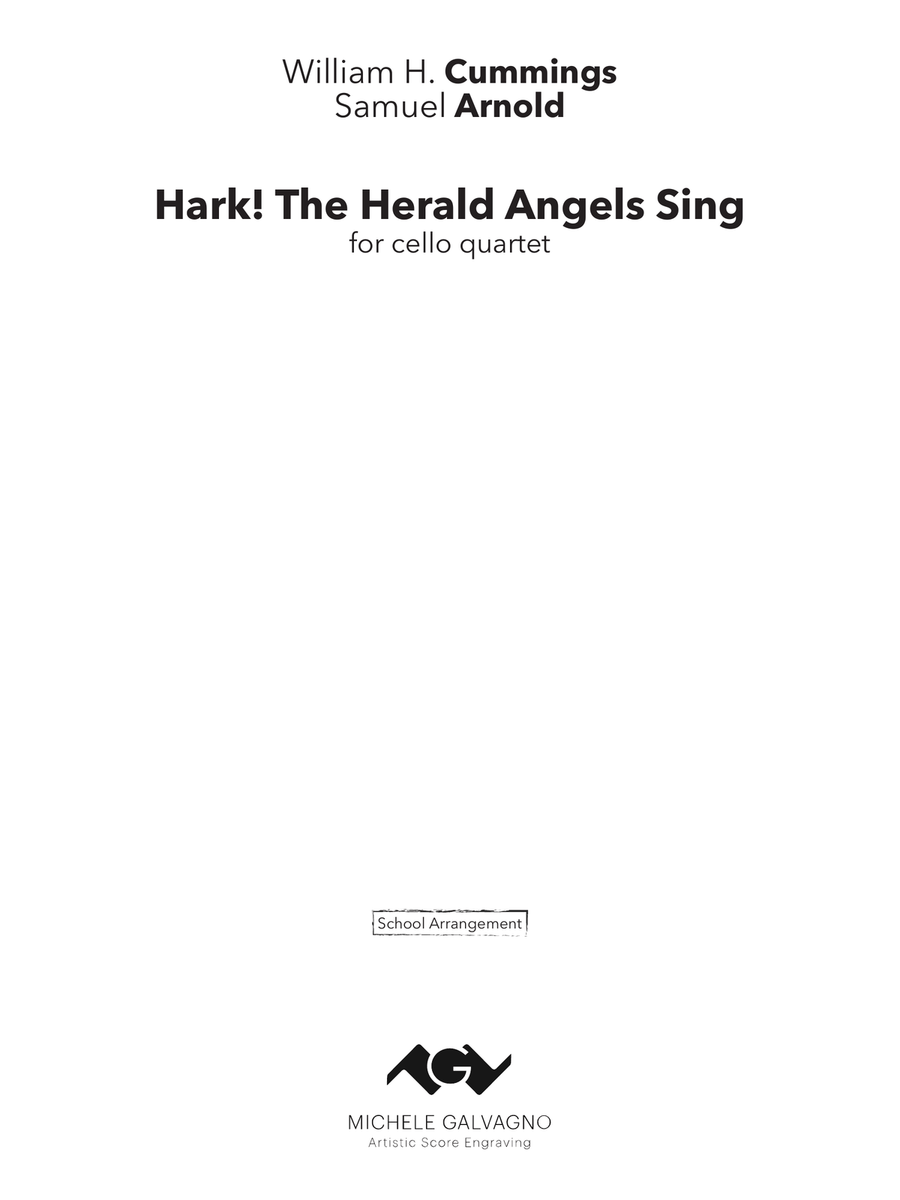Choral Choir (SATB) - Level 2 - Digital Download SKU: A0.841364 Composed by Felix Bartholdy Mendelssohn, Samuel Arnold, and William H. Cummings. Arranged by Michele Galvagno. Christian,Christmas,Praise & Worship,Sacred. Octavo. 18 pages. Artistic Score Engraving di Galvagno Michele #6098157. Published by Artistic Score Engraving di Galvagno Michele (A0.841364). This year's Christmas publication choice fell on a song very dear to me: Hark! The herald angels sing. The text, inspired by Lukeās Gospel (2:14), appears for the first time in a collection of Christmas carols called Hymns and Sacred Poems in 1739, jointly written by Charles Wesley (1707-1788 ) and George Whitefield (1714-1770), two of the founding members of the Methodist movement.The version we know today is the one adapted by William H. Cummings (1831-1915) from the section Vaterland, in deinen Gauen of the Festgesang zum Gutenbergfest, WoO 9, by Felix Mendelssohn-Bartholdy (1809-1847). The story, however, is more complex and articulated than that.The original version of the text, written by Wesley, bearing the title Hymn for Christmas-Day, had received only slow and solemn music for its verses, music now almost completely discarded. Also, his original opening lines were Hark! How all the welkin rings / Glory to the King of Kings .The version that has been passed to us is the result of alterations made by different hands, especially those of Whitefield, who changed the initial couplet into the one we know today.In 1840-one hundred years after the publication of Hymns and sacred Poems-Mendelssohn composed a cantata commemorating Johann Gutenbergās invention of movable-type printing. The English musician William H. Cummings finally adapted Mendelssohnās music around 1855 in order to fit the music to the verses and give it its present look.In this edition we propose the version that every listener expects to hear when reading the title on the programme and, immediately after, one of the few original versions that have reached us in their entirety, that is the one set to music by Samuel Arnold (1740-1802) and available today in The British Minstrel, and Musical and Literary Miscellany, vol. 3, published in 1843.The proposed instrumentations are those of the classical string quartet and the cello quartet. Both variants are very simple to perform and are certainly suitable for small string ensembles formed in musical schools. In the cello quartet version, the only relatively complex part is that of the first cello, which should be left to the teacher or to a student able to play up to the 7th position without excessive troubles.I hope this music can bring you the serenity that made me prepare it.
